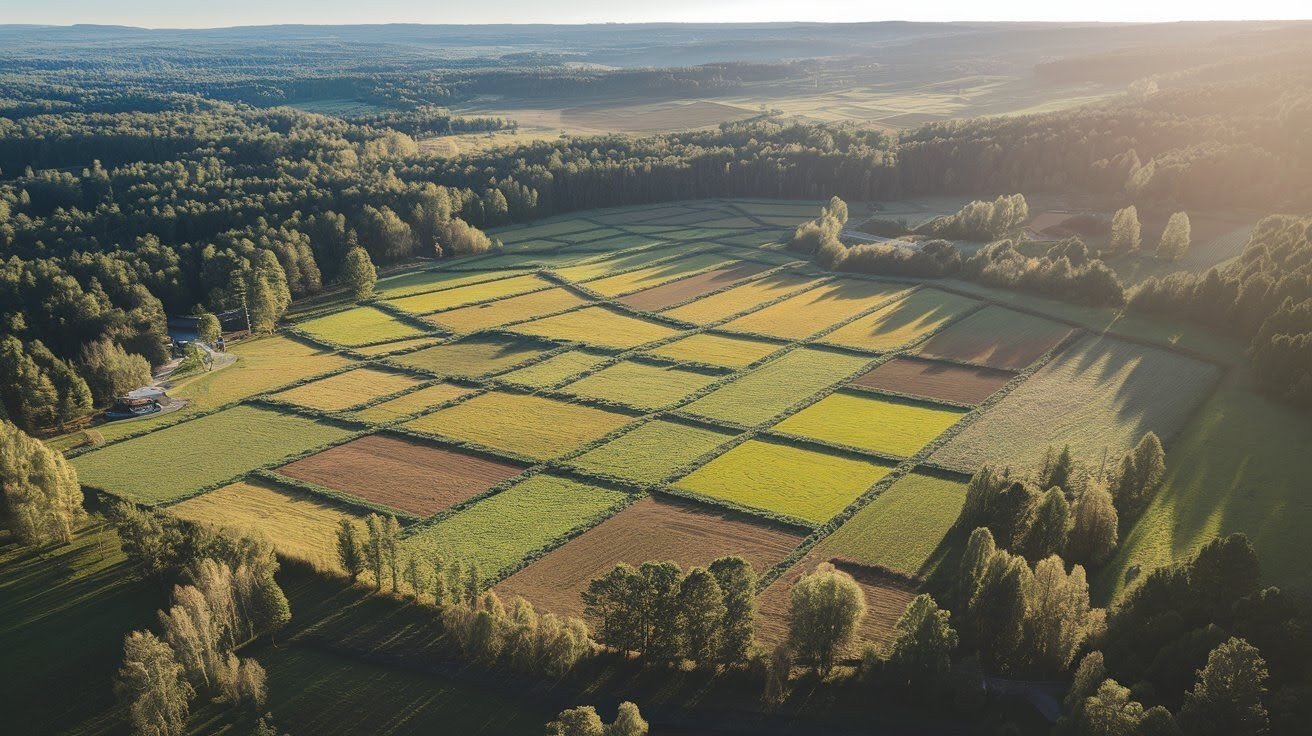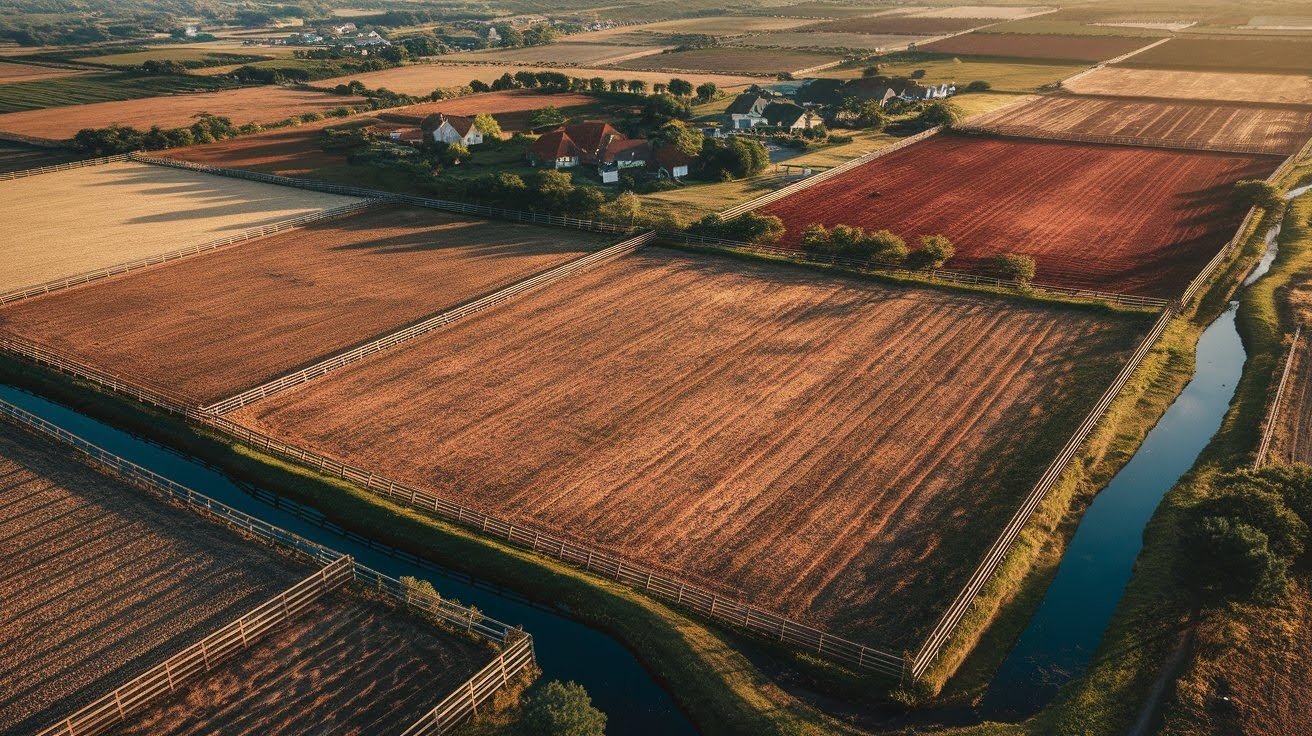If you’re considering selling your land, you may be wondering how much it will cost you to use a real estate agent. Many landowners and land sellers are not aware of what the agent’s commissions will be when they sell.
Knowing what is typical commission is for land sales can save you thousands of dollars. Sales commission rates vary widely depending on property type and location. Most sellers pay commissions of 5-10 percent of the sale price.
This guide explains everything you need to know about land sale commissions, including average commissions, what affects the commission for selling land, and how to reduce the amount of commission you will have to pay to sell land.
The Standard Commission Rate for Land Sales
The 5-10% range represents the typical commission for land sales across most markets. If you’re selling a $200,000 piece of land at 6%, you’ll pay $12,000 in total commissions. This amount usually gets split between your listing agent and the buyer’s agent.
National averages show real estate commissions hovering around 5.57% for all property types. Land commissions often run higher because selling vacant property takes more time and effort than selling homes.
The commission is typically split evenly between the agents involved in the sale. If the total is 6%, each agent receives 3%. However, nothing is set in stone you can negotiate different arrangements based on your specific situation and the services you need.
Quick Commission Breakdown: What to Expect
Lower-priced properties sometimes work better with flat fees instead of percentages. If you’re selling land under $50,000, a 10% commission might feel excessive. Some agents offer flat rates like $3,000-$5,000 regardless of sale price, which can save you money on smaller parcels.
Key Factors That Impact Land Sale Commission Rates
Regional differences also affect commission rates significantly. Southern states might have different typical rates than Western states. The local competition among agents and the number of land sales in your area influence what agents charge for their services.
Property Price and Commission Structure

Lower-priced land often commands higher commission percentages. A $50,000 plot might carry an 8-10% commission because agents need to earn enough to justify their time and marketing expenses.
Properties under $100,000 frequently see commissions in the 8-10% range. Your agent still needs to create listings, take photos, host showings, and handle paperwork. When the sale price is low,
As property values increase, commission percentages often decrease. A $1 million parcel might sell at 4-5% because the dollar amount compensates the agent well. This inverse relationship between price and percentage gives you negotiating leverage when selling higher-value land.
Land Type and Classification

| Land Type | Typical Commission Range | Key Factors |
| Vacant Residential Lots | 5-6% | Standard marketing, faster sales |
| Agricultural/Farmland | 6-8% | Specialized buyers, soil quality matters |
| Cropland | 6-7% | Yield history is important, and seasonal timing |
| Pastureland | 6-8% | Water access is crucial, and the fencing condition |
| Timber Land | 7-9% | Requires forestry assessment, limited buyers |
| Mobile Home Sites | 5-7% | Zoning verification needed, utility access |
| Raw/Undeveloped Land | 8-10% | Longest sale time, most marketing required |
| Developed Land | 5-6% | Easier to sell, clear utilities, and access |
Complexity and Scope of Work

Some properties require extensive testing before they can be sold. If your land needs percolation tests for septic systems, your agent does extra work coordinating these assessments. Soil quality reports.
Verifying utility access and septic information takes time and expertise. Your agent might need to contact multiple utility companies, review county records, and arrange site visits with engineers.
Modern land sales often require drone photography and aerial mapping to properly showcase the property. These professional services cost money and time to coordinate. Properties that take 12+ months to sell (common for land) mean agents wait longer for payment.
Market Conditions and Location

Regional variations in what is typical commission for land sales can be significant. Southern U.S. markets often see different commission structures than Northeastern markets. Your state’s typical practices and local competition among agents influence standard rates in your area.
Urban land near growing cities typically sells faster and at lower commission rates. Rural properties might command 7-9% because they target a smaller buyer pool and take longer to sell.
Supply and demand directly impact commission rates. In hot markets where land sells quickly, agents might accept lower percentages. Slow markets with lots of available land give agents more leverage to maintain higher commission rates since they’ll work harder.
Zoning and Land Use Restrictions

Properties with clear, favorable zoning often sell faster and command lower commissions. If your land is pre-approved for residential development or commercial use, agents can market it more easily.
Land with multiple use possibilities gives agents more marketing angles. A parcel zoned for agricultural, residential, or commercial use can appeal to different buyer types. However, your agent needs expertise in all these areas to properly market such versatile properties.
Restricted land with easements, conservation requirements, or limited development rights presents unique challenges. Agents must thoroughly understand these restrictions and communicate them clearly to buyers.
Who Pays the Commission on a Land Sale?
Understanding what is typical commission is for land sales includes knowing who actually writes the check. While sellers pay the fees, these costs factor into your listing price strategy. Most sellers price their land to cover commission expenses and still net their desired amount.
Traditional Payment Structure
Sellers typically pay both agents’ commissions from the sale proceeds at closing. Your listing agent receives their portion, then splits the commission with the buyer’s agent according to their agreement.
The listing agent determines how to split the commission with cooperating buyer’s agents. A common structure is 3% to the listing agent and 3% to the buyer’s agent, totaling 6%. Your listing agreement specifies these percentages before you agree to work together.
The 3%/3% split works like this: on a $300,000 land sale, the total commission is $18,000. Each agent receives $9,000 from that amount. However, agents typically work under a brokerage and split their portion with their broker.
Recent Changes After NAR Settlement
The buyer’s agent commission is now more flexible after the recent National Association of Realtors settlement changes. Buyers and their agents now negotiate compensation directly in some cases.
Despite these changes, most sellers still choose to offer buyer’s agent compensation. Why? Because properties that offer buyer’s agent fees attract more potential buyers. Buyers working with agents prefer properties where they don’t need to pay their agent directly out of pocket.
Offering competitive buyer’s agent fees gives your property a marketing advantage. If similar land parcels are listed without buyer’s agent compensation, your property becomes more attractive to agent-represented buyers.
How to Pay Less Commission on Land Sales
Reducing commission costs can save you thousands of dollars on your land sale. You have several options to lower what you pay, each with different trade-offs. The key is choosing the approach that balances cost savings with the support you need for a successful sale.
Many sellers assume they’re stuck with whatever commission rate agents initially quote. Actually, you can negotiate rates, use alternative services, or sell independently. Your strategy should match your property type, timeline, and comfort level with the selling process.
The right approach depends on your specific situation. High-value land in desirable locations gives you more negotiating leverage. Properties that are harder to sell might benefit from full-service representation even at standard rates.
Three Approaches to Reducing Commission Costs
Option 1: For Sale By Owner (FSBO)
Selling land yourself eliminates commission costs. You handle all marketing, showings, negotiations, and paperwork. This sounds appealing until you consider the challenges involved in the process.
FSBO land sales come with significant risks. Research shows FSBO properties sell for an average of $55,000 less than agent-assisted sales. Only 6% of all property sales happen through FSBO, an all-time low that reflects how difficult this approach has become.
Handling the entire sale process yourself means learning about legal documents, title issues, and disclosure requirements. Land sales involve unique challenges like boundary surveys, soil tests, and zoning verification.
Option 2: Negotiate with Traditional Agents
Most sellers try to negotiate lower commission rates with traditional agents. However, only 22% of sellers successfully reduce rates below the agent’s initial quote. Your leverage matters here agents are more willing to negotiate when you offer something valuable in return.
You have the most negotiating power with high-value land or properties in desirable locations. Agents know these properties will sell faster and require less marketing effort. If your land is worth $500,000+ or sits in a hot market, you can reasonably request 4-5% instead of 6%.
Offering multiple properties to the same agent also creates negotiating opportunities. If you own several parcels or plan to sell more land in the future, agents might accept lower rates on individual sales.
Option 3: Work with Low-Commission Agents
Services like Clever Real Estate connect sellers with experienced agents who charge lower rates. These companies offer 1.5% listing fees instead of traditional 3% rates, cutting your commission costs in half.
Low-commission services pre-negotiate reduced rates with their agent network. You don’t need to haggle or justify your request for lower fees. The reduced rate is guaranteed as part of the service model, which removes the awkwardness of negotiating.
These services work well for straightforward land sales that don’t require extremely specialized expertise. You receive professional marketing, showings, negotiations, and closing support. The main difference is the lower fee structure, not the level of service you receive.
Should You Use a Realtor When Selling Land?
Most land sellers benefit from professional representation despite the commission costs. About 90% of buyers and sellers use agents for real estate transactions. This statistic reflects the value agents provide in marketing, negotiations, and managing complex transaction details.
Land sales present unique challenges that experienced agents handle better than most sellers can independently. Finding the right buyers for vacant land requires access to specialized databases and marketing channels.
The decision to use an agent should balance commission costs against the value they bring. For complex properties, remote locations, or sellers without real estate experience, professional help usually pays for itself through higher sale prices and smoother transactions.
Conclusion
Understanding what the current average commission is on land will help to set a selling strategy. Average commission is usually around 5 to 10%, varying with land value, location, complexity, and market status. These fees will be deducted from your proceeds.
You may be able to reduce or avoid commissions by negotiating with your agent, using a low-commission service, or using FSBO techniques. Most people choose to use agents, despite the cost.
The main thing is to find what is right for your situation. You should be looking to maximize your net proceeds. In general, an agent who charges a higher commission but gets your land sold faster and for a better price is preferable to a lower commission for a commission discount.
Frequently Asked Questions
What percentage do most realtors charge to sell land?
Most realtors charge between 5-10% commission to sell land, with 6% being common for standard properties. Lower-priced land under $100,000 often sees higher percentages around 8-10%, while expensive properties may negotiate down to 4-5% since the dollar amount is substantial.
Can I negotiate land sale commission rates with my agent?
Yes, all commission rates are negotiable no law fixes these percentages. However, only 22% of sellers successfully negotiate lower rates. You have the most leverage with high-value land, desirable locations, or when offering multiple properties to the same agent for future sales.
Is the land commission higher than the house commission?
Land commission rates typically match or slightly exceed house commission rates. The national average for all real estate is 5.57%, and land often runs 5-10%. Land sales take longer and require specialized marketing.
Who pays the real estate commission when land is sold?
The seller traditionally pays all commission costs from the sale proceeds at closing. This includes both the listing agent’s fee and the buyer’s agent’s compensation. The total commission is deducted from your sale price before you receive your net proceeds from the transaction.
Are FSBO land sales worth it to avoid commission?
FSBO land sales eliminate commission but come with significant drawbacks. Properties sold by owner average $55,000 less in sale price, and only 6% of sales happen this way. Unless you have real estate experience and extra time, professiorepresentationatiorecommendeddedn.



